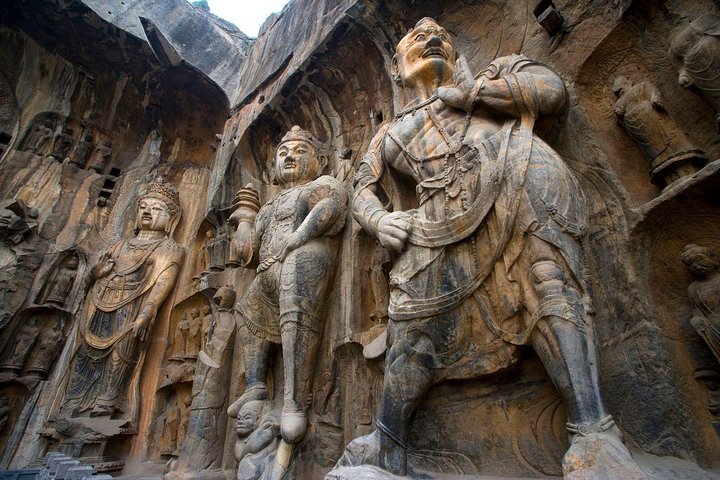Unveiling the Mysteries of Luoyang: A Day of Cultural Discovery
Eager to delve into the heart of Chinese history, I embarked on a private day tour of Luoyang’s Longmen Grottoes and White Horse Temple. Join me as I explore these iconic sites, uncovering the rich cultural and spiritual heritage that defines this ancient city.
A Journey Through Time: The Longmen Grottoes
As I embarked on my journey to Luoyang, I was filled with anticipation. The Longmen Grottoes, a UNESCO World Heritage Site, promised a glimpse into the rich tapestry of Chinese history and art. Upon arrival, I was greeted by my knowledgeable guide, whose passion for the history of the grottoes was infectious. We began our exploration of the more than 2,300 caves and niches carved into the limestone cliffs, each one a testament to the artistic prowess of the Northern Wei and Tang Dynasties.
Walking along the 1km stretch of the grottoes, I was struck by the sheer scale and intricacy of the carvings. The Fengxian Temple, with its colossal Buddha statue, was particularly awe-inspiring. As I stood before it, I couldn’t help but reflect on the centuries of devotion and craftsmanship that had gone into creating such a masterpiece. The Wanfo Cave, with its myriad of smaller statues, offered a more intimate glimpse into the spiritual life of ancient China.
The experience was not just a visual feast but a deeply spiritual one. The serene surroundings and the gentle murmur of the river below added to the sense of timelessness. It was a reminder of the enduring power of art and faith, a theme that resonates deeply with my own cultural explorations across Asia.
A Spiritual Pilgrimage: The White Horse Temple
After a delightful lunch at a local restaurant, we made our way to the White Horse Temple, considered the birthplace of Chinese Buddhism. As someone who has spent years studying the spread of Buddhism across Asia, visiting this temple was a pilgrimage of sorts. The temple, founded in 68 CE, stands as a symbol of the cultural exchange between India and China.
Walking through the halls and pavilions, I was transported back in time. The stories shared by my guide brought the history of the temple to life. I learned about the two Indian monks who brought Buddhist scriptures to China, marking the beginning of a new chapter in Chinese religious history. The temple’s architecture, with its blend of Chinese and Indian influences, was a testament to this cultural fusion.
The White Horse Temple is not just a historical site; it is a living, breathing place of worship. As I watched monks and devotees go about their rituals, I was reminded of the universality of faith and the ways in which it connects us across time and space. It was a fitting conclusion to a day steeped in history and spirituality.
Reflections on a Day Well Spent
As the day drew to a close, I found myself reflecting on the profound experiences I had encountered. The Longmen Grottoes and the White Horse Temple are more than just tourist attractions; they are windows into the soul of China. They offer a glimpse into the country’s rich cultural heritage and the enduring legacy of its spiritual traditions.
For someone like me, who has dedicated his life to understanding and sharing the cultural treasures of Asia, this journey was both enlightening and humbling. It reinforced my belief in the importance of preserving these sites for future generations. As I boarded the train back to my accommodation, I felt a deep sense of gratitude for the opportunity to witness such beauty and history firsthand.
I encourage all who seek a deeper understanding of Asia’s cultural and spiritual heritage to embark on this journey. The Luoyang Day Tour offers a unique opportunity to connect with the past and find inspiration for the future. It is a journey that will stay with you long after you have left the ancient city of Luoyang.
















































